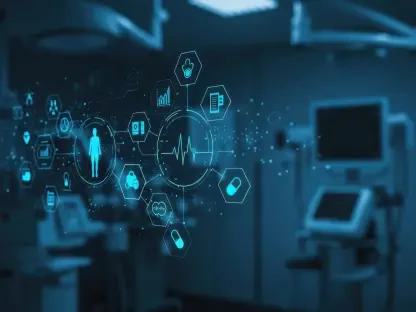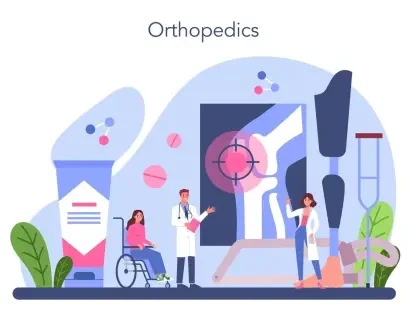The increasing use of digital health channels has made telehealth a staple in modern healthcare delivery. Yet, heightened scrutiny surrounds its security measures due to this surge in popularity. Statistically, in 2024, a staggering number of healthcare data breaches signaled the urgent need for foolproof security protocols. This review delves into the technological innovations shaping telehealth security and evaluates their effectiveness in fostering trust and protecting sensitive patient data.
Evolution and Context of Telehealth Security
Telehealth security protocols arose from a necessity to protect patient information in an increasingly digital healthcare environment. They have evolved from basic password protection to complex systems incorporating encryption and real-time monitoring. The relevance of these protocols is underscored by legislation like the Health Insurance Portability and Accountability Act (HIPAA), mandating stringent data protection standards.
In recent years, the landscape of healthcare security has shifted dramatically, influenced by advances in technology and the rising sophistication of cyber threats. As telehealth becomes more prevalent, the need for robust and adaptable security measures is more critical than ever.
Analyzing Telehealth Security Features
Comprehensive Encryption
End-to-end encryption stands as a cornerstone of telehealth security, offering a method to keep communications confidential. This feature ensures only the communicating users can access the data, making it invaluable amid growing concerns over data breaches.
Not just limited to encrypting messages, this protocol includes securing video consultations, prescribing processes, and other exchanges of sensitive information. Encryption’s performance ensures that telehealth platforms provide secure interactions without compromising the speed or quality of service.
Enhanced Authentication Mechanisms
Multi-factor authentication (MFA) strengthens telehealth security by requiring multiple proofs of identity before granting access. This layered approach significantly reduces risks associated with unauthorized entry into sensitive systems.
The technical process behind MFA involves combining something the user knows (like a password) with something they have (such as a phone) or something they are (fingerprint), ensuring a high level of security amidst a spectrum of evolving threats.
Continuous Security Evaluations
Frequent audits are crucial in maintaining the security and integrity of telehealth systems. By regularly assessing vulnerabilities and compliance with industry regulations, security audits help pivot strategies to address emerging threats.
These evaluations not only reinforce existing defenses but also offer insights into potential areas for improvement, ensuring telehealth systems remain resilient against a rapidly changing threat landscape.
Latest Trends in Telehealth Security
The telehealth sector has recently witnessed innovations that further reinforce its security framework. Artificial intelligence, for instance, is increasingly used for threat detection, enabling proactive responses to security incidents before they escalate.
Emerging trends also include the adoption of blockchain technology for secure data storage, which provides an immutable record of transactions, significantly reducing the chance of tampering with health records.
Practical Applications and Industry-specific Implementations
Telehealth security has been successfully integrated across various healthcare sectors, offering unparalleled protection without sacrificing user experience. In mental health services, for example, secure messaging platforms ensure patient confidentiality, fostering trust and encouraging engagement.
Another notable case involves large healthcare facilities employing advanced authentication methods to restrict data access only to privileged users, thus safeguarding against potential breaches and ensuring compliance with stringent regulatory standards.
Challenges in Implementing Telehealth Security
Despite significant advancements, challenges persist in the realm of telehealth security. Technical complexities, such as integrating new technologies into existing systems, pose significant obstacles. Market constraints and regulatory requirements further complicate effective implementation.
Efforts to address these challenges include ongoing research into more efficient integration methods and constant updates to regulatory guidelines that reflect current technological trends and threats.
Future Directions for Telehealth Security
As technology advances, so too will telehealth security protocols. Innovations like zero trust architecture and privacy-enhancing technologies (PETs) are set to redefine how patient data is protected. These advancements promise not only enhanced security but also a seamless user experience, laying the groundwork for telehealth’s future evolution.
Breakthroughs in machine learning and 5G networks will also likely play pivotal roles in shaping the future landscape of telehealth security, offering new solutions to long-standing challenges in securing digital healthcare services.
Critical Reflections and Future Steps
In reflecting upon telehealth security protocols, several key insights emerge. Robust encryption and authentication are essential components in safeguarding patient information. However, challenges such as technical integration and regulatory compliance continue to pose hurdles for broader adoption.
Future steps must involve a balance of advanced technology integration, comprehensive training programs, and constant vigilance through regular security evaluations. By exploring cutting-edge innovations and enhancing current frameworks, the healthcare industry can more effectively protect sensitive information and maintain patient trust.









